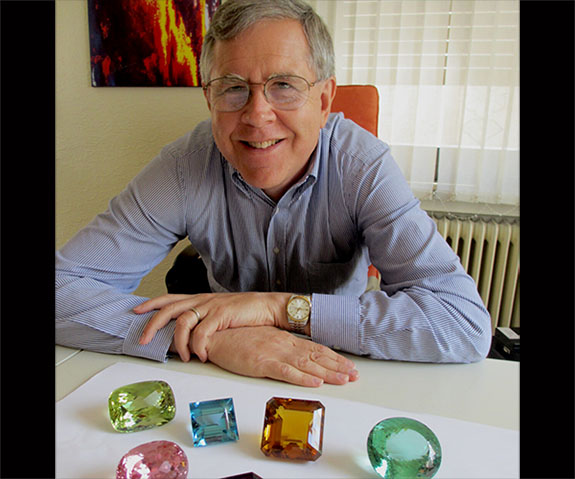Dr. Jeffrey Post, the Smithsonian's long-time curator in charge of the Gems and Minerals Collection at the National Museum of Natural History, will be packing up his loupe and retiring to Wisconsin after a distinguished 39-year career in Washington, DC.
Post was a post-grad at Harvard University in 1984 when he learned that there was a job opening for a research mineralogist at the Smithsonian in DC. Not knowing what to expect, he was impressed during the interview process by how everyone seemed to love what they did.
He also got a peek at a collection that included 375,000 minerals and 10,000 gems. It was an opportunity that he couldn't pass up, and within seven years he was named lead curator.
Over time, he also earned the unofficial title of "The Keeper of the Hope Diamond," the 45-carat blue diamond that is the unequivocal star of the National Gem Collection. Nearly four million visitors per year visit the National Museum of Natural History and the vast majority will make the effort to saunter by the exhibit containing the most famous diamond in the world.
Although the Hope Diamond has had a reputation for harboring a curse, Post believes just the opposite is the case during its stay at the Smithsonian.
"I like to think that it's been a really good source of good luck for us," he told Spectrum News. "You know, ever since it came, the attendance has really increased. We get a lot of people wanting to see it. And so I would say, you know, it's been a really important part of building our program here at the museum."
In his final presentation to the Mineralogical Society of DC, Post spoke fondly of his unique relationship with the Hope Diamond.
"One of the highlights of working at the Smithsonian is having the opportunity to not only hold and look at the Hope Diamond, but to study it — from a scientific point of view and also learning more about its history," he said.
Post also emphasized how the Smithsonian's collection continues to support scientific research in ways that were unfathomable when he started his career nearly four decades ago.
"We continue to learn from these mineral specimens," he said. "We poked and prodded these things, and other scientists did, as well. But, the kinds of questions we were asking, the kinds of techniques we were using are totally different than they are now."
Post said that these minerals are currently helping to answer important questions related to climate change, sustainability and how life began on Earth.
"And so we're always going to go back to the minerals to interrogate them in new ways and ask new questions," he said. " And that will alway be why the collection needs to grow and needs to be there because we will alway look back to the minerals to learn something new."
Post is proud of the gem legacy he is leaving behind.
"How often can you work someplace [and then] when you leave, you think it's going to still be the Smithsonian 100 years from now, 500 years from now, 1,000 years from now?" he said.
Credit: Image via Smithsonian / National Museum of Natural History.

